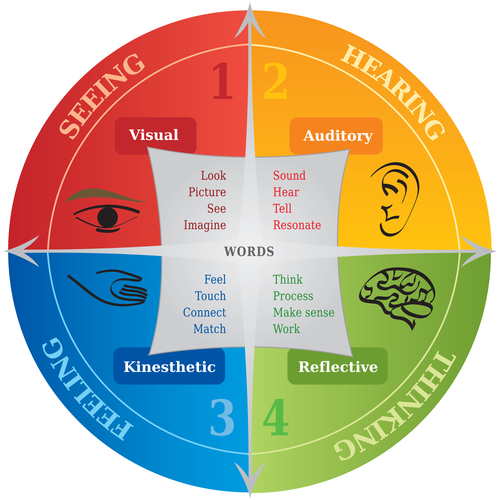How to Give an Effective Teaching Demonstration
Reviewed by Jon Konen, District Superintendent Giving a teaching demonstration can be intimidating. In fact, you can win (or lose) a job based on your performance during a demonstration lesson. It is important to know what you are getting into and how you can effectively prepare for the lesson. On this page education expert Professor MacGregor Kniseley provides tips and resources that will help you ace your teaching demonstration.
Featured Programs:
Sponsored School(s)
Featured Program: Education, MA
What Is a Teacher Demonstration Lesson?
- You may be directed to teach a specific topic or a particular skill; or, you may be able to teach a lesson entirely of your own choosing.
- You might be asked to teach a 15-minute lesson to the interview committee; or, you might be asked to teach a 45–60 minute lesson to a class of students.
- Sometimes the interview committee will provide time after the lesson to reflect with you on how it went as well.
What Do Employers Evaluate During a Demonstration Lesson?
Employers judge qualities related to effective teaching. They often use professional teaching standards such as the National Board for Professional Teaching Standards (NBPTS) and state certification standards to define their expectations.
Below are four important criteria for giving a job-winning demonstration. For each criterion we provide the indicators that employers are likely to use to evaluate your demonstration lesson, tips for ensuring your teaching demo meets these criteria, and valuable resources to help you plan.

1. Organize and deliver a purposeful lesson.
What with standardized testing and criteria for teaching to specific standards, teachers face high demands for accountability. There never seems to be enough time in the school day to cover everything. Effective teachers must be well-prepared, well-organized, and purposeful in their instruction.
Indicator: Conveys a strong sense of purpose and knows the lesson well.
Tips for making it happen:
- Practice, practice, practice! You can never practice too much before your actual teaching demo.
- Provide a copy of your formal lesson plan to all evaluators.
- When preparing, make sure you are clear about the objective of the lesson. In the classroom, begin by telling students the goal of the lesson so they have clear expectations.
- Choose a lesson subject that you know inside and out.
- Don’t load up on creative strategies or tools (such as technology) that don’t add to the purpose of the lesson.
Indicator: Sequences planned learning experiences with a timetable.
Tips for making it happen:
- Have a clear beginning, middle, and end to your lesson.
- In preparing, give yourself a rough timeframe for each part of the lesson.
- Although you need to plan the sequencing and flow of the lesson, be flexible. Don’t rush to a new part of the lesson if students aren’t ready. Don’t linger on another part if students have a good grasp of the material
Indicator: Delivers an engaging lesson that motivates students to learn.
Tips for making it happen:
- Use interactive teaching strategies such as cooperative learning to engage all learners simultaneously.
- Provide students with many opportunities to interact, both with you and each other.
- Model concepts and instructions.
- Deliver positive feedback that is specific and genuine.
Resources to Help Get You There
How to Plan Effective Lessons (Association for Curriculum Development, ASCD)
Teaching Channel (videos, ideas for lesson plans, lesson planning strategies)
Lesson Planet (online curriculum search tool for K–12 educators)
2. Respond to all learners.
Effective teachers recognize the wide range of needs among diverse learners in the classroom. They use knowledge of how their students learn along with their students’ individual interests, strengths, challenges, language, cultural backgrounds, and developmental needs to mold their lessons. In addition, effective teachers collaborate with other school personnel in teaching students with special needs.
Indicator: Connects with all students in the classroom.
Tips for making it happen:
- Begin the lesson by getting to know the learners, building rapport, and pre-assessing.
Indicator: Differentiates instruction to engage all learners.
Tips for making it happen:
- Incorporate a variety of teaching techniques into your lesson to ensure you address all learning styles.
- Anticipate the cultural differences in your class and weave in cultural connections in your lesson.

Indicator: Assesses student learning.
Tips for making it happen:
- Check in with students regularly to make sure they are grasping the content.
- If some students are having difficulty, determine whether you might reach these students using another technique.
- Bring the lesson to a close by allowing students to self-assess and/or summarize their learning.
Resources to Help Get You There
3. Manage the class.
Effective teachers create the conditions for a safe, productive learning environment. They have a plan for a well-managed classroom based on a learning community, structures, routines, and clear expectations and instructions.
Indicator: Creates a positive environment that fosters learning and respect.
Tips for making it happen:
- Begin the lesson by setting ground rules (norms) for successful learning (e.g., respect, safety, responsibility).
- Use specific positive feedback to motivate students and set a positive tone for learning.
Indicator: Makes smooth transitions from the whole class to small groups.
Tips for making it happen:
- Make notes in your lesson plan about when working with small groups might be advantageous.
- Have students form small groups at the start of the lesson so you can easily move from whole-class instruction to small-group interaction.
Indicator: Has command of the classroom.
Tips for making it happen:
- Remind students of the ground rules you established at the beginning.
- In order to foster trust and rapport, address individual students (or small groups) by name when providing feedback, and make the feedback specific to the actions of those students.
- Don’t be afraid to move around the classroom.
Resources to Help Get You There
Ten Tips for Effective Classroom Management (National Association of Elementary School Principals, NAESP)
4. Reflect and make adjustments in the moment of teaching.
Effective teachers work from a well-conceived plan of action. However, during instruction they should monitor their students’ learning and make changes to their lesson plans as needed.
Indicator: Uses results of formative assessment to make instructional decisions.
Tips for making it happen:
- Frequently ask students questions to assess their understanding.
- Change direction if students are not grasping a concept.
- Re-teach if it’s clear students are confused or need more information.
Indicator: Is flexible, yet maintains a focus on the purpose of learning.
Tips for making it happen:
- In preparing for your lesson, consider other ways to present the material if students aren’t grasping the concepts.
- If you need to change direction during your demonstration, make sure you keep the overarching goal of the lesson in mind. Don’t go off on tangents that take you away from the purpose of your lesson.
- Use your gut. Every lesson is different, and there are no set prescriptions for how to react to the unexpected in the classroom. Don’t be afraid to follow your instincts.
Resources to Help You Get There
In Summary…
DO
- Interact with students and encourage them to interact with you.
- Model instructions or concepts.
- Establish rapport with students.
- Keep in mind the overarching purpose of your lesson.
- Assess student understanding as you go and alter instruction as needed.
- Prepare your lesson well ahead of time and practice, practice, practice!
- Recognize the diverse needs of students.
DON’T
- Assume that everything will go as planned.
- Incorporate lots of bells and whistles that don’t contribute to the effectiveness of the lesson.
- Gloss over students’ questions in order to stick to your lesson plan.
- Get in over your head with regard to subject matter.
- Lose sight of what you want students to achieve.
- Focus on how well YOU are doing—instead, focus on how well students are learning.
Author: Dr. MacGregor Kniseley, Ed.D.
Dr. Kniseley began his 35-year career in education as a teacher employed in non-school environmental education programs. He taught for 10 years in elementary and middle schools, and since 1990, has been a professor of elementary education at Rhode Island College. He is the author of “The Guide to Winning a Teaching Position in Any Job Market,” based on the workshop he leads of the same name.



